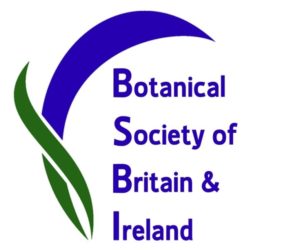Kirkcudbrightshire Botany Group, Ken-Dee Marshes, 06/04/2019
A bright sunny day welcomed 10 of us to the RSPB’s Ken-Dee Marshes SSSI, with singing Chiffchaffs and, later on, a Willow Warbler’s sibilant trill to herald the spring.
First the stats. We covered 3 monads on the west bank of the Ken, recording 120+ plant species from deciduous and coniferous woodland, grassland, marsh and swamp and the loch sides.
The usual suspects, i.e. the common species, for which we did some revision as this is just the start of the recording season; distinguishing between Common and Sticky Mouse-ear (Cerastium fontanum and C. glomeratum) – leaf shape, size and colour; Creeping and Meadow Buttercup (Ranunculus repens and R. acris) – degrees of leaf division and stalked leaflets.
However at the car park we found what seemed to be another chickweed, but with pointed light green leaves and three prominent veins to each leaf – Three-nerved Sandwort Moehringia trinervia, while further down the track in a marshy ditch we came across a glossy-leaved buttercup which turned out to be Celery-leaved Buttercup R. sceleratus.
One of the highlights of the day was to find, repeatedly along the track side, large patches of Town-hall Clock Adoxa moschatellina with its four tiny outward facing flowers topped by an upward looking flower. An Ancient Semi-Natural Woodland Indicator (ASNW) species which, if not seen before the rest of the vegetation grows, is soon lost to sight, usually by mid-April.
Other ASNW species were found later, including emerging shoots of common Enchanter’s Nightshade Circaea lutetiana, flowering Opposite-leaved Golden Saxifrage Chrysosplenium oppositifolium; Marsh Hawk’s-beard Crepis paludosa, Yellow Pimpernel Lysimachia nemorum and Dog’s Mercury Mercurialis perennis. Even some of the Bluebells Hyacinthoides non-scripta were just beginning to flower.
Away from the track, the extensive marsh and swamp areas revealed a wide variety of sedges, from the light green-leaved Brown Sedge Carex disticha, through Glaucous Sedge C. flacca with its two different coloured leaf surfaces, Common Sedge C. nigra growing on raised tufts of grasses and just showing the beginnings of a flowering spike, to Bottle Sedge C. rostrata and a couple of others I was unable to identify at this stage.
We also had Green-ribbed Sedge C. binervis – on account of its green ribs on the utricles of the fruits; the very fine leaved and clumpy Remote Sedge C. remota; and Wood Sedge C. sylvatica. Plenty of dried stems of Reed Canary Grass Phalaris arundinacea, while Jim and Peter found a very acid patch of ground with the two Cottongrasses (Eriophorum angustifolium, E. vaginatum) the second of which was just producing flower stems and heads. Along with Bog Myrtle Myrica gale, Bog Asphodel Narthecium ossifragum and Cross-leaved Heath Erica tetralix. By way of contrast there was also a raised knowe of neutral grassland with emerging Lady’s Bedstraw Galium verum.
At the farthest point form the car park we entered the RSPB hide overlooking a Black-headed Gull colony and quickly spotted a pure white, large heron-like bird. It turned out to be a Great White Egret (heavy dark slate-grey bill, orangey legs and a cricked neck as well as wing plumes displayed on occasion). The gulls objected occasionally to its presence and sent it briefly into short flights. This is a rare species which is slowly colonising the UK from France, Spain, etc. It’s only been seen in D&G once in 1980 and then from 2014 onwards, just one or two individuals. There was also a Greenshank nearby and various ducks and geese.
We had few truly aquatic species, just Bog Pondweed Potamogeton polygonifolius, Water Horsetail Equisetum fluviatile with its hollow stems, False Bulrush or Reedmace Typha latifolia and Shoreweed Littorella littoralis. The walk back to the cars lead us past a stand of Aspen Populus tremula beside the track – several mature trees with the diamond-shaped lenticels on the trunk – producing suckers either side of the path. We had previously discussed some of the willows, eventually deciding that the peeled bark of the twigs revealed raised lines (striae) gave us Goat Willow Salix caprea. However once home, I realised that this was in fact a feature of the larger Grey Willow S. cinerea!
Unfortunately we didn’t have sufficient time to explore the other side of the loch for Pillwort Pilularia pilulifera as hoped, but we can rectify this with a half day excursion this coming Friday, 12th April.
David Hawker
BSBI county recorder for Kirkcudbrightshire VC73

